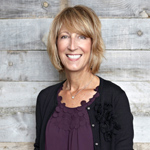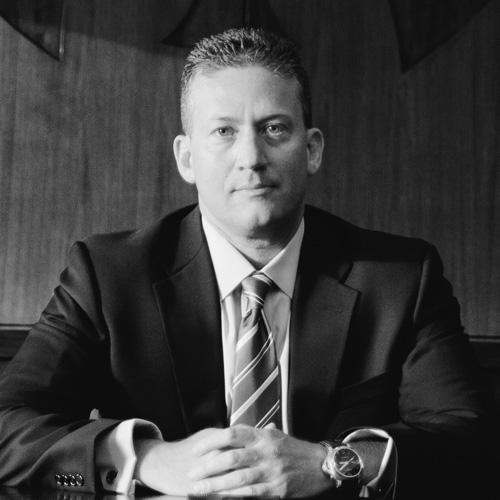Asking Rob Singer if he was interested in genealogy before becoming Ancestry.com’s global vice president of customer relationship management is a bit of a trick question. His answer: yes, but no. “Before joining Ancestry I would have said no,” he says. “When you hear the term ‘genealogy,’ it sounds so rigorous and scientific; I think of dusty books at the public library. I was always interested in family history, and it took working at Ancestry to realize genealogy is just a formal way of saying family history.”
Singer is not alone in this feeling. He cites a recent study that found that 80 percent of Americans are interested in family history. “We all want to know who we are and where we came from,” he says.
Ancestry.com, of course, is the wildly popular website that enables users to access family records and build their family trees, while also learning about their family’s genealogy and connecting with other users who share their ancestral roots. When Singer was growing up, he often heard stories about his great grandparents and the hardships they endured in order to immigrate to the United States. He had a deep interest in learning more about them in order to learn more about himself, but Singer hadn’t connected that interest to a general interest in family history until he joined Ancestry.com in November of 2010.
—Rob Singer
Before joining Ancestry.com, Singer’s professional background was varied in terms of the positions he held and the industries he worked in, but the one constant was that he was always at the intersection of data and business. Today, as a marketing executive, this remains true for Singer. While he still deals in data mining and data-driven marketing, his purpose is decidedly different: everything he and his 300-member team do is with the hope of creating a more meaningful and impactful customer experience. Or, as Singer says, the goal is to facilitate as many “aha moments” as possible for Ancestry.com’s customers; moments in which an unexpected piece of family history is revealed.
Singer and his team have been so successful at linking customers to meaningful information because they truly take the time to understand the joys and challenges of using the site and accessing such personally meaningful information. “I couldn’t do my job well if I didn’t understand our customers,” Singer says. “It’s so critical that we walk a mile in our customers’ shoes.”
There are more than 40 million user-generated family trees on the site, containing more than 4 billion profiles
Ancestry.com users have uploaded more than 150 million photos, documents, and written stories to the site
Users can access records dating back to the 1500s
This means moving beyond the data mining to connect with customers on a personal level. “One of the first things I do every day when I come into the office is check out our Facebook page and our message boards to see what our customers are saying,” Singer says. “If I can understand the conversations the customers are having and any concerns they may have, then I can understand the customers better. We have a vibrant Voice of the Customer program that ensures our customers get a seat at the table, and always having the voice of the customer in mind is critical to who we are.”
The importance of Singer’s team’s deep understanding of the site can’t be overstated. Singer’s employees are so good at what they do because they too are constantly exploring the site and researching their own family histories—or, as Singer says, “We’re geeks on our own tool.” A firm understanding of what works on the site and what doesn’t guides the team in its day-to-day responsibilities. In addition, Ancestry.com is able to maintain its title as the largest, most popular family history company in the world because it has the largest array of content of any family history website, providing access to records that date back to the 1500s. This includes death certificates, birth certificates, marriage records, divorce records,
and census records.
With the reputation of being the best family history site in the world comes a great deal of pressure to constantly meet the high expectations of customers. This pressure is not lost on Singer. “Meeting our customers’ expectations is on my mind every minute of every day,” he says. “That is the pressure I feel every day. What people do on our website is so incredibly personal. There is nothing more near and dear to our hearts than our family, and we understand the gravity and the sensitivity of what we’re doing. There is emotion at the base of our business, and we want customers to find value in the service we’re providing.”
—Rob Singer
Anyone can register on the Ancestry.com website and receive a free 14-day trial. One of Singer’s biggest challenges is converting these registrants into paying subscribers. The key is to ensure that the registrant has a successful experience during those first two weeks. Given all of the features the site has, many first-time users sign on to become subscribers because discovering their family’s origins becomes an almost addictive experience. Singer and his team also ensure that customers have a wide range of tools to guide them in their searches, including educational videos, monthly webinars, one-on-one contact with customer service, and the “Hints” feature, which proactively provides information and records on ancestors in a customer’s family tree.
“When visiting our site, we arm you with tools to find what you’re looking for,” Singer says. “Often, you find information you didn’t even know
existed. ‘Hints’ is a really successful feature that leads to many aha moments.”
Ancestry.com continues to stay ahead of the curve, especially when the company rolled out its mobile app and the AncestryDNA product that was launched in early 2012, which enables customers to have their saliva analyzed in a professional lab for a detailed view of their genetic ethnicity and matches them with other AncestryDNA customers to whom they are related. The service costs $129 for Ancestry.com subscribers. When combined with the 34 million user-generated family trees on the site and the 10 billion records subscribers have access to, AncestryDNA creates the most comprehensive family history experience yet.
“When you analyze DNA you’re opening up a whole new world of family history,” Singer says. “Never in my life did I think I’d be impassioned by genealogy. Everyone who works at Ancestry truly embraces the company’s mission, which is to help people discover, preserve, and share their family history. What we get to do is actually quite beautiful, and we take our work very seriously.”

